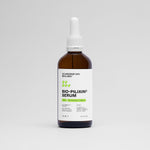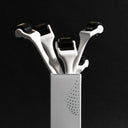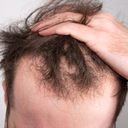Hair thinning is a widespread concern affecting millions worldwide, often striking a blow to self-esteem and sparking urgent questions about regrowth. Whether triggered by aging, stress, hormonal shifts, or medical conditions, the sight of dwindling strands can feel disheartening. But before resigning to hats and scarves, it’s crucial to ask: Is reversal possible? This article dives into the science of hair regeneration, exploring when and how thinning hair can recover—and when it might require more advanced intervention.
Table of content
Can Hair Grow Back After Thinning?
Yes, hair can grow back after thinning, but success depends on the underlying cause and timely action. If hair follicles remain intact (non-scarring alopecia), regrowth is often achievable through treatments like minoxidil, lifestyle changes, or addressing root causes like nutrient deficiencies. However, if follicles are destroyed (scarring alopecia), regrowth becomes unlikely without surgical options like transplants. Early diagnosis and targeted therapies significantly improve outcomes.
As your leading source for hair health information over the past 4 years, we never compromise on accuracy. When it comes to your health, you deserve information you can truly rely on - and earning your trust is our top priority.
Here's how Scandinavian Biolabs ensures every piece of content meets the highest standards of accuracy and integrity:
- Credentialed Experts: Our reviewers are actively practicing doctors and medical researchers
- Stringent Reviews: Content undergoes rigorous editing by subject specialists and review by a practicing doctor.
- Evidence-Based: We rely on well-established research from trusted scientific sources like peer-reviewed journals and health authorities.
- Full Transparency: Our editorial standards, writer credentials, reviewer credentials, correction process, and funding are all publicly documented.
- Independent Voice: While we do promote products, we operate in a vacuum to business operations. Our main goal is just an unwavering commitment to providing medically-sound guidance.
You can count on Scandinavian Biolabs to consistently deliver the trustworthy health information you deserve. Read our Editorial Standards.
Understanding the Hair Growth Cycle
Phases of Hair Growth
Hair grows in three phases:
- Anagen (Growth): 2–7 years of active growth; 85–90% of hair is in this phase.
- Catagen (Transition): 2–3 weeks; hair detaches from the follicle.
- Telogen (Resting): 3–4 months; old hair sheds, new hair begins forming.
Thinning occurs when the anagen phase shortens or more hairs enter telogen prematurely.
Follicle Health: The Key to Regrowth
Hair follicles are dynamic organs. If they’re miniaturized (as in male/female pattern baldness) but not scarred, reactivation is possible. Scarring from conditions like lichen planopilaris, however, destroys follicles permanently.
Common Causes of Hair Thinning and Regrowth Potential
1. Androgenetic Alopecia (Pattern Baldness)
Regrowth Potential: Moderate with treatment
The most common cause, driven by genetics and dihydrotestosterone (DHT). Follicles miniaturize over time but can respond to:
- Topical Minoxidil: Stimulates blood flow, extending anagen phase.
- Oral Finasteride/Dutasteride: Blocks DHT, preventing further loss.
- Low-Level Laser Therapy (LLLT): Revives dormant follicles.
2. Telogen Effluvium (Stress-Induced Shedding)
Regrowth Potential: High
Triggered by stress, illness, childbirth, or crash diets, this temporary condition pushes hairs into telogen. Recovery tips:
- Resolve underlying stressors (e.g., improve diet, manage anxiety).
- Supplement with iron, biotin, or vitamin D if deficient.
- Expect regrowth within 6–9 months post-trigger.
3. Alopecia Areata (Autoimmune)
Regrowth Potential: Variable
The immune system attacks follicles, causing patchy loss. Treatments include:
- Corticosteroid injections to suppress inflammation.
- JAK inhibitors like baricitinib (approved in 2022).
- 60–80% of patients regrow hair within a year, but recurrence is possible.
4. Traction Alopecia (Hairstyle Damage)
Regrowth Potential: Early-stage: High; Late-stage: Low
Caused by prolonged tension from braids, weaves, or ponytails. Immediate action is critical:
- Stop damaging hairstyles.
- Use topical minoxidil to stimulate follicles.
- Advanced cases may require transplants.
5. Nutritional Deficiencies
Regrowth Potential: High with correction
Iron, zinc, protein, and vitamin D deficiencies starve follicles. A 2021 study in Dermatology and Therapy found that iron supplementation improved hair density in 72% of deficient women.
Proven Treatments to Regrow Thinning Hair
1. FDA-Approved Medications
- Minoxidil (Rogaine®): Over-the-counter topical or oral; works by vasodilation. Results in 6+ months.
- Finasteride (Propecia®): Prescription pill for men; blocks DHT. Effective in 83% of users.
- Spironolactone: Off-label use for women; anti-androgen.
2. Platelet-Rich Plasma (PRP) Therapy
Injections of concentrated platelets release growth factors. A 2020 meta-analysis in Aesthetic Plastic Surgery reported a 28–43% increase in hair density after 3–6 sessions.
3. Hair Transplant Surgery
Follicular unit extraction (FUE) or strip harvesting (FUT) relocates DHT-resistant follicles to thinning areas. Success rates exceed 90% with skilled surgeons.
4. Natural and Supportive Therapies
- Rosemary Oil: Comparable to minoxidil in a 2015 trial when used daily.
- Microneedling: Dermarollers boost minoxidil absorption and collagen.
- Balanced Diet: Prioritize protein, omega-3s, and antioxidants.
Lifestyle Changes to Support Regrowth
- Reduce Stress: Chronic stress elevates cortisol, shortening anagen phases. Practice yoga, meditation, or deep breathing.
- Avoid Heat/Styling Damage: Limit blow-drying, straightening, and chemical treatments.
- Scalp Massage: Improves circulation; 4 minutes daily showed 15% increased thickness in a 2019 study.
When Hair Won’t Grow Back: Understanding Limitations
In cases of scarring alopecia (e.g., frontal fibrosing alopecia) or decades-long pattern baldness, follicles are irreversibly lost. Options then shift to:
- Wigs/Toppers: High-quality human hair alternatives.
- Scalp Micropigmentation: Tattooed dots mimic buzzed hair.
- Acceptance/Styling: Embracing shorter cuts or buzzcuts.
Debunking Myths About Hair Regrowth
Myth 1: “Frequent Trimming Makes Hair Grow Faster”
Truth: Trimming removes split ends but doesn’t affect follicle activity or growth rate.
Myth 2: “Shaving Thickens Hair”
Truth: Shaving blunts the hair tip, creating an illusion of thickness. It doesn’t alter follicle size or density.
Myth 3: “All Supplements Boost Hair Growth”
Truth: Only supplements addressing specific deficiencies (e.g., iron, biotin) aid regrowth. Over-supplementing can cause toxicity.
When to See a Dermatologist
Consult a specialist if you notice:
- Sudden or patchy hair loss
- Scalp itching, burning, or scaling
- No improvement after 6 months of home care
Key Takeaways
- Hair thinning is often reversible if follicles are alive and treated early.
- Underlying causes (stress, hormones, nutrition) dictate the best approach.
- Combining medical treatments with lifestyle changes maximizes regrowth potential.
Conclusion
While hair thinning can feel like a losing battle, modern science and proactive care offer genuine hope. From FDA-approved medications to holistic lifestyle shifts, numerous strategies can revive dormant follicles—provided you act swiftly and address the root cause. Remember: The journey to thicker hair demands patience, consistency, and often professional guidance. By staying informed and persistent, you can tilt the odds of regrowth in your favor.
Tired of Thinning Hair? Try a Clinically Tested Serum.
Looking for a natural way to regrow hair and achieve a thicker, fuller head of hair? Ditch the stinging nettle for hair loss – Bio-Pilixin Serum is a drug-free hair activation serum that delivers clinically tested results.
Here's why Bio-Pilixin is superior:
- Clinically Tested Results: 93% of users saw a reduction in hair loss, and 73% experienced increased hair density.
- Safe and Natural: Unlike harsh chemicals, Bio-Pilixin uses plant growth factors derived from stem cell technology to nourish hair follicles and stimulate growth.
- Fast-Acting: See visible results in as little as 45 days (most typically see results within 150 days).
Stop wasting time on unproven remedies. Bio-Pilixin is the safe, natural serum you've been searching for.
Read more:






